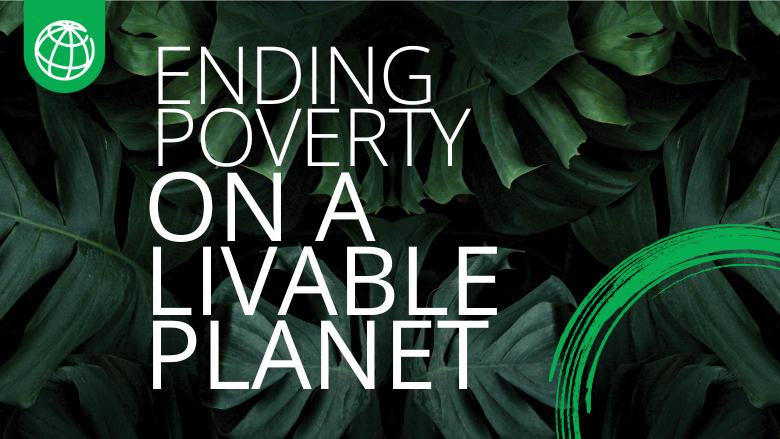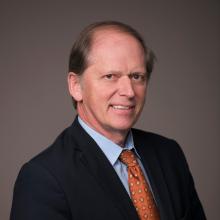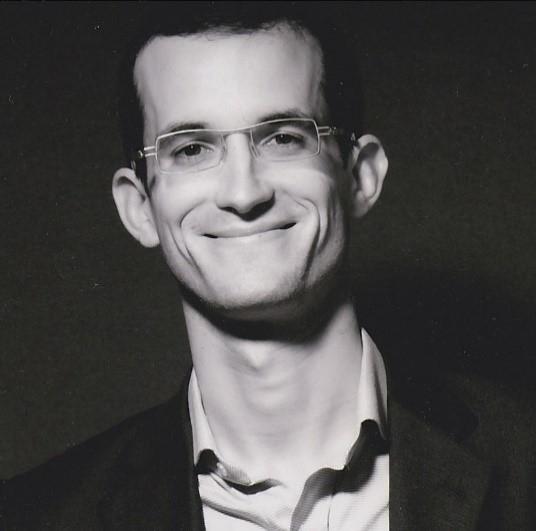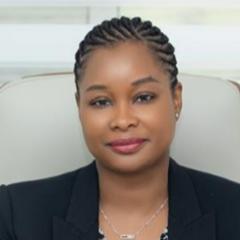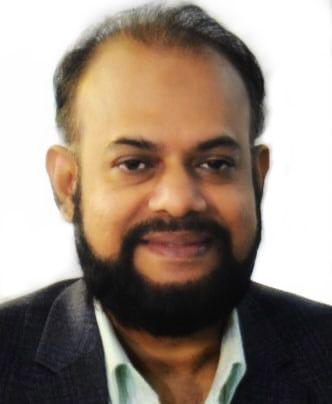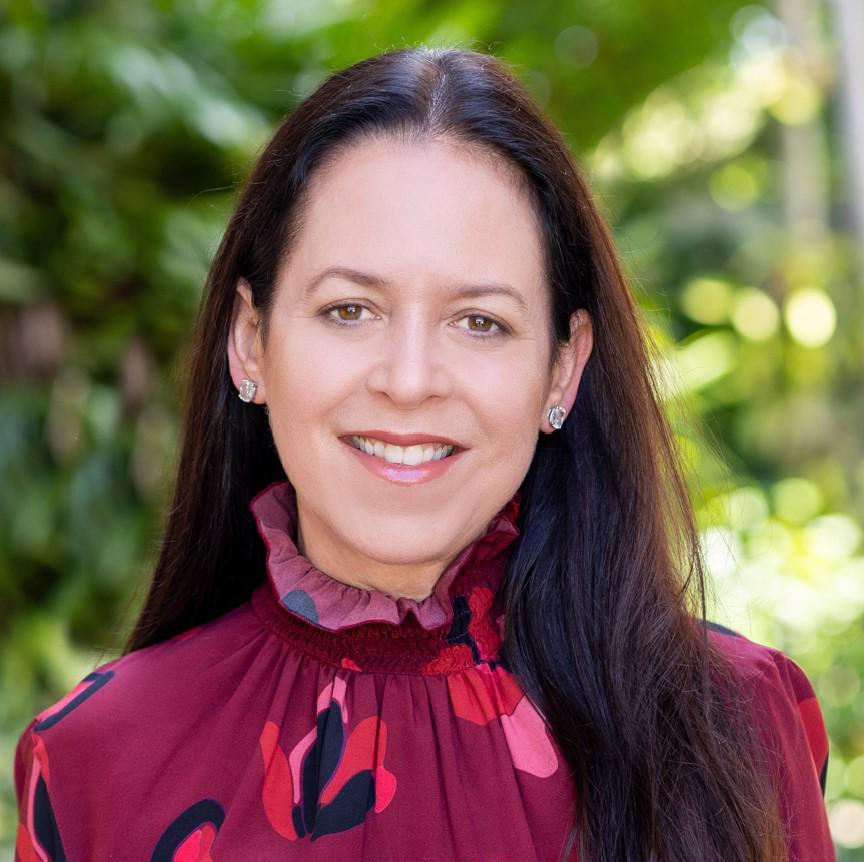[Stéphane Hallegatte] Good morning, everyone, and thank you very much for joining us this morning for what is a very important event for us, an event on adaptation and resilience, in which we will talk about the recent reports that we published on the topic and have a conversation with our panelists on what is happening on adaptation and resilience. I will start with introducing our guests with us today, and I’ll start with Mrs. Djami Diallo, your Minister of Environment and Sustainable Development for Guinea. Thank you for joining us. Then we have Mr. Ziaul [Haque], who is at the Ministry of Environment, Forest, and Climate Change, and your Director for Air Quality. Finally, we have Dana Barsky from Standard Chartered Bank, Global Head of Sustainability and Net Zero Strategies. Thank you very much to the three of you for joining us, but to get us started, let me introduce Juergen Voegele, the Vice President for Planet at the World Bank, who will give us the opening remarks. Juergen, the floor is yours.
[Juergen Voegele] Good morning, everybody. That sounds better. My last event, everybody was in earphones. Nobody could hear each other or talk to each other. It was pretty bizarre. Anyway, this morning, we’re coming together for a very, very important event. I think by now everyone is clear that if we deal with climate change, we have to strengthen our focus on adaptation. For the last few years, everyone was saying, we’ve got to prepare for the future. It’s happening now, and I think everybody feels it. Wherever you are, whatever country you live in, you feel it. Whether you’re in Europe, you’re in Africa, you’re in Asia, you’re in Latin America, it doesn’t matter. You feel it. I think we need to recognize this, that we have crossed that point. I think it’s very important, and you will hear from the panelists, how we need to recalibrate our own balance and our own thinking in what we do between mitigation and adaptation. Of course, we cannot lose sight of mitigation. We need to get the emissions down, but that alone will not help 1.2 billion people that are right now really feeling the impact of what’s happening today, not tomorrow. I think this shift in mindset is something you can elaborate on and can tease out a little bit in the panel going forward. Adaptation finance is not where it needs to be. It is way too little, way too late, and it’s not focused enough. What we did in this report that Stéphane will share with you and that the panel will discuss, Rising to the Challenge, is to say everything you do, all of you, all of us do in development, has to focus on adaptation. It needs to become a DNA of everything we do, every infrastructure, every social service, every macro fiscal conversation, everything that’s going on needs to have a lens through which you look and say, can we do something better? Can we do something that helps the poor people on the ground? Because they are the most affected, as we know. It’s always the situation. We, at the World Bank Group have stepped up, as I’m sure you’ve heard by now, significantly in our overall climate finance. We delivered 43 billion dollars for climate outcomes, and about 50% of that is for adaptation. We will continue to remain focused on adaptation in balance with our focus on mitigation going forward. We’re also really learning at the moment, as we speak, to rethink the way we measure impact and the way we measure outcomes, moving from just how many dollars do we put in, what is the actual outcome? How many people are actually less vulnerable to climate change, are more resilient, more adapted to what’s coming as a result of the investment? There is a huge group among multilateral development banks with many of our clients basically developing that methodology. I think it will make a big difference in the way we look at this. We have, again, decided to step up to 45%. When was it? Five years ago, we decided 35% of our finance will be climate-specific. It’s going to be 45% going forward, and the total amount goes up. Among all financiers around the world, we do the most on adaptation. That’s the reality. We do more than 50% of all adaptation climate finance around the world because we see it completely linked with development. We don’t have a development lens and then a climate lens. We see development and climate integrated in its entirety in what’s going forward. I think that’s a little bit what the report is coming out with. We need more focus on adaptation. We need more targeted adaptation so that in the limited resources that are available, you have the biggest return for the dollar. I think we have some examples of how this is done at the various levels in the panel going forward. I wish you all the best for the deliberations. Just to give you the message, at the World Bank, this is a no-brainer for us. People are suffering today, and we need to do a lot more to support them today while we are going forward. The previous event I’ve spoken was actually about children together with UNICEF, the GCF, and a number of other actors. The children are suffering phenomenally today as a result of climate change. 400 million children lost school time. It’s not because they were poor or sick, simply because of a climate impact on top of everything else that’s plaguing them. I think we are clear about this and we will make this a priority going forward. Thank you very much. Back to you, Stéphane. [Applause]
[Stéphane Hallegatte] Thank you very much, Juergen. To get us started with the rest of the event, we’ll start with a very short video, and then I will present very briefly the main messages from the report.
[Video plays] [Woman] I continue to worry about the problem of sea level rise. [Man 1] The sea has already destroyed part of my home. [Man 2] I started farming crabs when fish became scarce. [Man 3] Our goal is to make life better for fishermen and increase our income. [Man 4] From what I learned at climate-smart farming trainings, I set aside a portion of land to dig a water well. [Man 5] The purpose of the hybrid engineering dam is to trap sediments behind the bars and let it build up so it captures the perfect sediments for mangrove to grow. [Video ends] [Applause]
[Stéphane Hallegatte] Thank you very much. I hope Juergen’s introduction and the video already make adaptation and resilience a very concrete thing and not something very abstract. Now, I will just use a few minutes to summarize this report that we just published last week. I don’t think We need to start with a lot of motivation. We have in mind the images. This is from Spain and Valencia. We have the images of Hurricane Beryl earlier this summer. We remember the droughts in Africa last winter. We see those events, more and more of them. As Juergen mentioned, we see in parallel a large number of people at high risk from those threats. When I say at high risk, I’m saying that those people, 1.2 billion people, are first exposed to those risks, and this is what you see in blue in this map, and you see people exposed to climate change risks are everywhere, in rich and poor countries in all continents. But some of those people also are highly vulnerable in the sense that they don’t have even the most basic tools to manage shocks when they occur. They don’t have access to health care, they don’t have access to social protection, they don’t have access to financial instruments. So, when they are affected, they suffer much more than the rest. Those are the people in red here, and you see that those people are not everywhere. They are more concentrated in the poorest places in the world. So, what we’re trying to do in this report is acknowledging the increase in the threats and this very high vulnerability to identify what we can do and what we’re already doing. I’ll go through the three main messages. The first one is that what we’re doing on development, adaptation, and resilience cannot be separated. This is one big picture question. That’s why we’re saying in that book that if we want to be successful, if we want to protect people against risks, we need three things to occur. We need faster development because if you’re living in extreme poverty, if you don’t have access to water and sanitation, if you don’t have financial inclusion, you cannot be resilient. So, we need to go much further in terms of poverty reduction and development. But we also need better developments because not all development pathways are leading to the same level of resilience. Development needs to be inclusive. It needs to be informed by climate science. Finally, the last block is those targeted adaptation interventions that we also need. We also need those dikes and flood protection systems, but when we talk about climate finance, when we talk about climate priorities, we often talk about this last box. What we say in that report is we should not forget the other boxes and how this is just one single picture. We tried to quantify this in the book. We looked at an increase by 10% of GDP per capita. What do we get? As I’m sure you know, there are many ways of measuring climate risks. We’re looking at a lot of different metrics, and what we find is whatever the metric you use, higher GDP per capita tends to reduce the level of risk. Only a little bit if you look at monetary losses, much more if you look at the impact on poverty or the impact on well-being or the most vulnerable. But overall, a higher GDP per capita yields benefits in terms of resilience. This is one illustration of this. You see the fraction of people at high risk in countries as a function of their GDP per capita. You see, as countries get richer, you have fewer people, highly vulnerable, but also, if you look at one slice, countries with similar income, you realize you have these huge differences. Some countries are doing much better at the same income level to protect their population than others. What we need is to bring all countries, whatever the income level, at the best level in terms of resilience. And of course, and I want to repeat this, sea level rise, for instance, creates some new and unprecedented risks and needs some targeted interventions, but this all needs to be combined together. These findings have very concrete implications for us. When we’re doing our country climate and development reports, we’re looking at how countries can have resilient low-emission development pathways, and we’re looking at how much investments we need to do that. That’s what you see in this figure. In those investments, we cannot separate. We cannot say we need “X” for development and “Y” for adaptation and so on. It’s all one integrated development path that is building resilience, and we can discuss what we need to get there, but it’s very difficult to separate into very clear boxes. If it’s all integrated, of course, it’s important that climate risks are mainstreamed into development and economic policies. The second big message is, based on an analysis of 44 countries, we find that countries are not yet mainstreaming climate risks into their economic and development policies. Here, we’re applying a systematic readiness assessment in all of those countries. We’re looking at a few key dimensions. First is the foundation, the development pathway. Second, we have full priority areas, like helping firms and people adapt, adjusting land use plans, infrastructure and key services, helping firms and people recover when they are affected by shocks, and the macro fiscal and monetary aspects. Finally, we’re looking at whether countries really implement what they have decided to do and if they have good monitoring and evaluation. What we find, and I won’t go into much details, but countries are making huge progress, all countries, at all income levels. But there are three things on which they are really lacking. One is they are doing great in planning, but they really struggle to connect adaptation plans with the sectoral plans and sectoral actions that they are having. So, you get multiple plans that don’t always talk to each other. Second, they are lagging on everything linked to the macro-fiscal aspects, taxes, monetary policies, and so on. And last, and that’s particularly worrisome, they are lagging on monitoring and evaluation. And of course, we need to know what works if we need to do better. So that’s an issue. So the lags, the gaps, we identify very well, but I want to conclude on the third more positive message, because we try to get this report in the nice spot between the urgency of action, but also acknowledging that a lot is happening in the world. It’s not always visible because a lot is not labeled adaptation and resilience, it’s labeled good business practices, or it’s labeled good development, but still we see a lot of progress on adaptation and resilience. We have 30 examples of private sector actions that build resilience and adaptation. Three key lessons of this. First, a lot of firms and businesses are doing it because it’s good business practices, but small and medium-sized companies are really struggling. Second, when you have huge non-economic benefits, you need some support from the government and public-private partnerships. And third, and that’s particularly interesting to me, a lot of firms are doing resilience, not as a stand-alone thing, but in a package around sustainability and responsibility. We also have nine case studies of public sector actions, so governments are moving too. I won’t go into the details, it would take me too long, but I want to flag, since we have Bangladesh on our panel, one of our case studies is on weather forecasts and how it helps farmers in Bangladesh with measurable results improving farmers’ lives. Also, in Bangladesh and in other countries, a lot of progress on adaptive social protection. And again, we measure the benefits of that. And finally, and we have Guinea on our panel, too, one of the challenges is to connect the national scale with local action. In Guinea, we have a lot of policies to make sure locally-led adaptation takes place, and we will discuss that in a minute. So, I will just stop here, ending on this positive note that we see best practices in all sectors, in all regions of the world. We’re not starting from scratch. What we need today is to move from best practices to normal practices, which means to replicate and to scale up what we see is working. This is not easy, and I hope we discuss in this panel how we will do so. Thank you very much. So now I will move back to the seat, and we’ll move to the panel parts of the discussion. [Applause]
[Stéphane Hallegatte] Thank you so much. If you don’t mind, I’ll start with you, Madame Diallo, on the case of Guinea. One thing that we noted in the report is how much progress you have made on locally-led adaptation and how you have been connecting that to the revenues from mining to try to provide a solution for this financing gap that we keep talking about. Can you describe a little bit more what you have been doing in that sector and on boosting adaptation?
[Djami Diallo] Thank you. Good morning to everyone. Guinea is a country that is rich in mineral resources, but we noticed, for instance, we have bauxite and gold. But a few years back, we noticed that despite the exploitation of mines, we are not seeing development at the community’s level. An answer to that was we set up a national development fund using the mining revenues to ensure that they contribute to the country’s development and that they are fairly distributed to the largest population and especially the communities. 15% in bauxite, 15% of the mining revenues are used for the fund to develop economic and social projects in all the regions because we have some regions that do not have minerals, but those minerals are a national resource. The fund is managed by the National Agency for Financing Local Development, and it has supported the establishment of social infrastructure based on municipal organizations and local development committees, which participate in preparing local development plans and also to monitor projects that are financed by the fund. In recent years, the investment in social infrastructure has increased. We have built schools, health centers, but what we have noticed is that the challenges posed by climate change adaptation are growing, and it appears that it’s crucial to incorporate climate adaptation into local development plans and investments. Our new Local Governance Support Project, which is supported by the World Bank, will help mainstream climate adaptation into local development plans and increase the share of adaptation-focused projects into local development financing. And finally, to further support local communities in adaptation efforts, we are committed to creating local jobs around protected areas through agroforestry, for instance, and ecosystem restoration, which will enhance the resilience of the communities to the effects of climate change.
[Stéphane Hallegatte] Thank you so much. As we think about what can be replicated, and everybody’s talking about those green minerals that will be creating wealth in the world, I think this is a good example of how to make sure those revenues are really used for the communities. I will turn now to you, Mr. Ziaul. We used the example of Bangladesh. For disaster risk management, Bangladesh has been an example that we have used a lot, but I think a lot of countries would be very interested in your success on weather forecasts and this connection with farmers. Maybe you can you tell us a little bit about what led to that success and what can be replicated by others.
[Ziaul Haque] Thank you, Stéphane, and Your Excellencies, the distinguished delegates and colleagues. In fact, as you have rightly pointed out in your presentation that we have to rise to the challenge, and we have been trying to rise to the challenge. In fact, I can give you one specific example on how we are trying to build our capacity to respond to the early warning forecasting systems, both in meteorological, hydro-meteorological, and agro-meterological systems. In doing so, we tried to capture some of the critical elements in terms of strengthening our observation systems with the infrastructure and equipments. At the same time, you know that Bangladesh is one of the most climate vulnerable countries in the world. We consider ourselves ground zero to the adverse and very negative impacts of the climate change, particularly on widespread, very severe flood. We experience flood in every year, and as well as the river bank erosions, the corresponding impacts that we are experiencing. We feel that if we have a good early warning system, forecasting systems, with the existing meteorological systems and hydrological systems, then we can actually provide the important information to the farmers when to plant the seed, when to apply the fertilizer, pesticides, when they should harvest. Since we are experiencing a huge deal, a great deal of uncertainty, the climate variabilities and climate uncertainties. In doing so, with a project, with the support of the World Bank, we call it Bangladesh Weather and Climate Services Regional Project. Through the project, we have expanded our network with regards to the hydrological forecasting from half of the country to the entire country. At the same time, in terms of the lead time for weather forecasting, we actually achieved from one day to three days in terms of the meteorological forecasting. At the same time, through our modernization, we have achieved some tools so that we can update the information around the very specific locations, and we can make updates every 15 minutes. It will help assess our... Particularly to track the upcoming cyclones or the flash floods, so how they are developing with real-time basis. At the same time, we are trying to also to provide some research facilities with the initiative, combining with the universities research institutions. At the same time, we have also developed some modeling so that we can have a groundwater modeling, surface water modeling, and drought monitoring systems. We have one part of the country [that] is also experiencing drought. But you understand that we get the huge rainfall in a large catchment area, more than 2 million square kilometers. These whole waters flow through Bangladesh down to Bay of Bengal. We are receiving the waters from the second largest river system in the world. On the one hand, we are suffering from huge waters in the monsoon. At the same time in the rain period, we are also suffering from drought in the northern part of the country. We are trying to improve our facility so that we can enhance our forecasting and early warning systems, and at the same time, we can provide the information at the right time to the farmers for the agriculture production so that the loss of crops, loss of property will be reduced in terms of loss and damage. So, we are trying. Thank you.
[Stéphane Hallegatte] Well, you’re more than trying because we see the results, right? So, I think it’s a really good thing, and the result of not just one initiative, but I think it’s really the result of a long, over decades of efforts to just build those capacities, and it’s great to see the results today. Dana, I’ll turn to you. It has been a little bit of a cliché to say that, “Oh, it’s very difficult to get the private sector engaged on adaptation.” But when you start looking, there are a lot happening. One of the things happening is an engagement on how to think about it and the frameworks. You have published this guide with partners recently that was really a marker in the field. Maybe you can tell us a little bit about that guide and what you see as the most important parts in the guide.
[Dana Barsky] Great. Thank you. Yes, in April, earlier this year, we published the guide. Sorry, just to frame the conversation for a minute. Standard Chartered Bank, we operate in 52 markets. 90% of those countries are coastal, and so we felt it was really critical to start to think about adaptation as early as possible. As was said earlier, it was way too little, way too late, and not focused enough. So, with our guide, we really hope to accelerate the focus. And so, we published it earlier this year with KPMG and with UNDRR, important partners to us. I have to say, it was designed to really be a practical roadmap to crowd in both private sector financing and public sector financing. It met with tremendous global coverage, including the FT. I think what that showed us is that there is a heightened awareness of this critical need, which we were very pleased with. And so, the framework itself is a definition of eligible activities, be it, as was mentioned here earlier, important aspects such as an irrigation, parametric insurance, and also infrastructure, which is really critical that we really need to start investing early now. And so, that framework is an important first step in crowding in this capital. Now, part of the work that we did as well, we looked at the adaptation economy. We looked at 10 different developing economies, including Bangladesh. What the report showed, and the research showed, is that failure to invest 30 billion now will result or will cost us in years to come about over 300 billion. That means there’s a 10 times effect of investment now and cost savings from disasters later. Bringing this investment earlier is just so critical. The themes that are outlined in our report, I think, mimic some of the things that you talked about and are really designed to turn climate risks into opportunities that we can all invest in together.
[Stéphane Hallegatte] Thank you. Next time somebody tells you that the private sector is doing nothing, I hope we can push back because it feels lonely sometimes. I’m turning back to you, you highlighted this source of finance to do local developments. The question is, how does climate risks enter into this and how to favor locally-led adaptation? I think it’s really, really important because first, the solutions are always very local, but also because there is not one solution. It’s important that people choose what solution works for them. Maybe you can describe a little bit how this work in practice in your country?
[Djami Diallo] Sure. Very soon in Guinea, we are expecting the mining revenues to increase, particularly with the upcoming Simandou mining project, which holds the potential to decarbonize the global steel sector with the high-grade iron ore. Building on this momentum, we aim to scale up initiatives that bolster local adaptation financing in order to enhance community resilience. In Guinea, it’s important to note that mitigation and adaptation are very closely linked with our partners, including the World Bank and the Partnership for Market Implementation. We are committed to develop in 2025 an emission reduction program related to REDD+, reducing emissions from deforestation and forest degradation, which is based on national initiatives such as the expansion of our network of national parks, and also a very ambitious reforestation program. Finally, this program’s benefit sharing plan will use the existing social infrastructure in order to increase investment to empower local communities to face the effects of climate change.
[Stéphane Hallegatte] Thank you. Thank you so much. I think this is really important because in all of the discussions we have about climate finance, which is often about the international level and the high level and the big numbers, the question of how does the money go to the communities who need it is sometimes not discussed enough. It’s great to have that discussion here. I’ll turn to you now on the... You described, I think, very well one successful intervention. The question is, what are the barriers that you saw that others might want to know? But also, what are the barriers for other interventions that Bangladesh might need for the future? Of course, those barriers are really important because Juergen was talking about being targeted. We really want to identify those barriers and to remove them urgently. It’s good to have your experience on that.
[Ziaul Haque] Thank you, Stéphane. In fact, when you talk about mainstreaming climate change into a national planning process as well as development activities, it is not easy. In doing so, we have to integrate all activities related to respond to the climate change phenomena. The challenge is that whatever we are achieving through different initiatives, we have to maintain the sustainability, how we can sustain this achievement in the longer period of time. This is critical. At the same time, as you have pointed out, and Excellency has pointed out about the mobilization of finance, adequate finance, domestically and from international sources. This is also challenging. At the same time, you also talked about attracting the private finance. It is not easy. In that case, as you said, that the support from the government is also critical. In Bangladesh, we are trying to mobilize both the public resources as well as the international resources. To some extent, the private investment is coming forward, but the point is that if you want to sustain the previous achievement, we have to have the adequate resources. We have to retain the institutional setup that you have built, and you have to retain the manpower, the skilled manpower that you have actually generated over the years. At the same time, the coordination, very coherent and synergistical coordination is very critical among the ministries. We have many ministries and their line agencies, so we have to maintain a good coordination and coherence in their activities. For instance, in terms of the monitoring, in the terms of the weather forecast and the early warning system, there are three key institutions: meteorological Department, then Hydrological, the Bangladesh Water Development Board, and Bangladesh Agriculture Department. But they are situated in three other ministries: Agriculture Ministry, Water Resources Ministry, and Ministry of Defense. We have to maintain a very good working relationship with these three ministries among these ministries. This is not easy, but we have to maintain it. The government is trying, its level best, to maintain this good coordination among the ministries. At the same time, in the national budget, we have to provide adequate resources to actually up and run the existing infrastructure. We have to maintain the operational and functional initiatives that we managed previously, but we have to continue to manage it in the coming years. There are challenges we have to face and we have to overcome as well. Thank you.
[Dana Barsky] Maybe I can just pick up on that. Private sector at Standard Chartered, we are investing. I would say the private sector does want to invest. What’s so critical to us is really the policies within the country and stability, potentially derisking when necessary from entities such as the World I think, but we need to really work together in partnership. I think that in itself will help crowd in some of the private capital. It’s not easy, and we need to think about it in new terms. We talked about earlier, the frameworks that we’re writing. Part of that is really critical, too, because when the private sector does invest, we also need to diversify that risk. We need additional investors who can help think about investing in adaptation and what that means to them. And so, these frameworks, I think, working together with governments, are going to be very instrumental in bringing in more capital.
[Stéphane Hallegatte] Maybe building on that, do you feel you have a way of communicating back to the public sector? What do you need to invest more? And what is the channel through which you can talk about that and inform them?
[Dana Barsky] I think these conversations, they are happening, but it is early, and maybe it should have been done even a year ago. But I think having conversations with the governments and entities such as the World Bank to think about what are the investment opportunities within a country. We talked about some of them being infrastructure, just so critical. Which departments, which agencies within our country can help contribute to a holistic mapping of adaptation needs for a country? Then bringing all the parties together to think about where that investment could come in, be it private sector capital, public sector capital, government support or policies that will encourage investment, even things such as permitting and speeding that up, I think, is really critical. Thinking about it from a holistic perspective, from a country perspective, is also really going to help here because adaptation can’t be solved in one little place. It has to be solved from a systematic, much broader perspective than perhaps investment in infrastructure has been done previously.
[Stéphane Hallegatte] Maybe my question was about how you communicate to the public sector. I think I want to ask you two the same question. Do you have a good sense of what is blocking the private sector for a stronger implication? You mentioned the case of mining, for instance, responsibility of mining. There is the revenue, but there is also their activities, right? Do you have a sense of what are the key factors on that?
[Djami Diallo] I think there’s something very important that she mentioned is that the private sector needs stability and policies that are fairly communicated. In Guinea, what we have set up within the mining ministry is a one-stop window where any investor comes there and all the permits that are needed for a project, for a mining project, can be applied for in this one office within one ministry because in a given project, there are actually several ministries that are involved. He also mentioned it before. The Environment Ministry, the Mining Ministry, Construction, Transportation. All of those things, what we have tried to do is to put them in one place so that it makes it easier to streamline for investors.
[Stéphane Hallegatte] And on your side?
[Ziaul Haque] Just one point that I can make in terms of attracting the private investment. We tried to capture some of the elements in our National Adaptation Plan for agricultural activities. There are some areas where private sector can put in some investments in the agriculture sector, the seeds. We have to have the stress-tolerant seeds, the drought-tolerant, the flood-tolerant, the cyclone-tolerant seeds, saline-tolerant seeds. There are some de-risking policies we have to promote. We have public-private a partnership policy at national level where the public sector can take up some risk on the part of private sector. There are public-private partnership initiatives, and we are trying to promote them. In the coming days, hopefully, some private sector will come forward to invest in agriculture-related activities at national level.
[Stéphane Hallegatte] Thank you. Is that part of the things that Standard Chartered invests in?
[Dana Barsky] Absolutely. We will be there. No, but I think you touched on the importance of policy, public, private sector coming together, but I think another component of that is also thinking from a structural perspective where we each can have roles that make sense for us as organizations. That could be through project finance structures, where we’ve got new forms of offtake. It could be through fund structure where there’s certain concessionary capital pieces. I think we need to think about what are the risks, what are the investment needs, and what are the cash flows, and the savings that will come out of that. I mean, thinking about what I said earlier in terms of investment now is significant savings later 10 times. I think we need to all think about that when we design our investment policies.
[Stéphane Hallegatte] Thank you. It was really interesting that the core of the conversation was about this coordination. You have coordination across different sectors and ministries. You have coordination between the different levels, and the international level, national, and the local level, and the role of institutions to try to just make it work. One thing I was thinking of listening to you is when we talk about measuring results and the monitoring and evaluation, it’s very easy to measure the result of a dike. It’s very easy to measure the result of bringing water and sanitation. When we do interventions that target institutions’ capacity building, it’s very, very difficult to put a number in front of that and say, these interventions have produced X benefits in terms of resilience. At the same time, if we don’t do it, well, all of the problems that you have mentioned are in front of us, and even the no-brainer and the low-hanging fruits we just leave on the table. I think it’s really important as we think about the monitoring evaluation discussion, and Juergen mentioned that we’re moving toward measuring outcomes and not only how much we spend, but how much we get out of it, that we don’t forget about those soft interventions which are difficult to measure and assess, but might in the end be more important because they are not doing, but they are enabling others’ actions, and then help people help themselves. I think that’s something we should all keep in mind as we move forward in the many, many discussions we’ll have across sectors, across regions, and so on in those two weeks at the COP. I want to thank very much our panelists for joining us and all of those good examples which, again, I think are replicable. Thank all of you for joining us this morning, and I hope we’ll have a lot more conversations on adaptation and resilience. Thank you.


